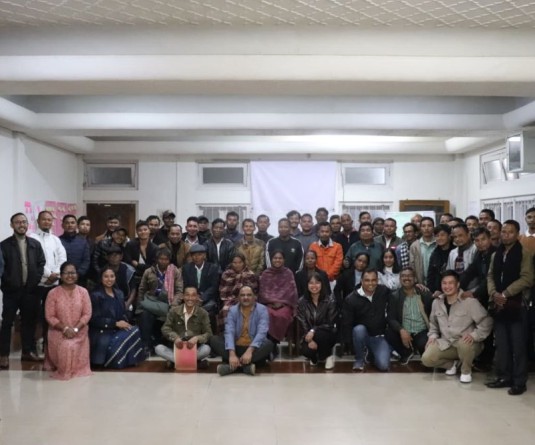
Shillong, February 28 (NNN): Manipur and Mizoram are close to universal as 98 per cent or more children enrolled in schools in the last five years. Meghalaya ranks way below the national average in the enrolment of children in schools, even as the number of out-of-school children is higher than the national average as compared to neighbouring states in the region, according to the eighth Annual Status of Education Report (ASER), 2012.
Only 94.7 per cent of children in the age group of 6 to 14 were enrolled in schools of Meghalaya in 2012, which is below the national average (96.5 %), ASER North East Coordinator, Ashok Mutum told reporters at a news conference here.
The report also revealed that around one fourth of children (15-16) are out of school. “The percentage of children “not in school” in Meghalaya is 18.8 per cent, which is above India average (17.0).” It is comparatively higher than neighbouring states – Mizoram (12.5 %) and Manipur (8.1 %).
Stating that private schools enrolment has increased year after year for 6-14 years old children, the report stated that 56.2 per cent of children enrolled in standard I-VIII in Meghalaya were going to private schools, which is lower than the national average (23 per cent).
ASER had conducted the survey covering 7 districts, 173 villages, 3412 households, 7148 children (3 – 16 years) and 129 schools in 2012. However, basic reading and arithmetic continue to be a cause of serious concern in Meghalaya.
Though 2012 was designated as the year of mathematics in India, the report said, “But it has been a bad year for basic arithmetic for India children in general and Meghalaya’s children in specific. In 2010, 85.5 per cent children enrolled in class V, were able to solve simple two-digit subtraction problems with borrowing which declined to 64.8 per cent in 2012.”
Comparing the cohort of children who were in government schools in class V in 2011 with the cohort in class V in 2012, there is evidence of more than 10 percentage point drop in the ability to do basic subtraction in almost all states. However, in Meghalaya there is a slight improvement of 0.9 per cent since 2011, it stated.
The report also said that based on RTE norms, the pupil teacher ratio (PTR) shows improvement over time. “In 2010, the proportion of schools meeting PTR norms was 54.3 % and has increased to 65.4 % in 2012,” it said.
Notwithstanding, the school facilities show improvement over time nationally, however the rate is either slow or showing no improvement in the state of Meghalaya.
In schools visited in 2012, 81.6 per cent did not have drinking water. The proportion of schools with useable toilets had increased from 24.5 per cent in 2010 to 30.9 per cent in 2012. Approximately 53.3 per cent of schools visited had separate provision for girls’ toilets. Midday meal was served in 29.7 per cent schools that were visited, the report pointed out.
Meanwhile, the ASER official said that study which started way back in 2005 has started gaining recognition at the Centre. “The Center government has even referred to ASER findings in the 12th five year plan while planning document for education related matters,” Ashok Mutum added.
Stating that the real struggle begins at the state level as the study has been unable to create the much needed impact on the officials, he urged the state departments to use the data and make a concrete plan on how to improve education in their respective states.


.jpg)



